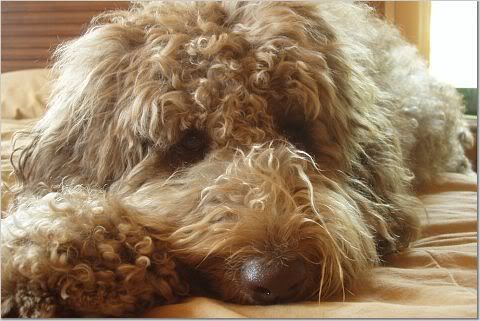
Late this afternoon, FDA posted the Inspectional Observations report (Form 483 report) that was handed to the Plant Manager of Diamond Pet Foods in Gaston, South Carolina at the end of a week-long inspection.
The inspection, which was initiated on April 12th as a result of an outbreak of Salmonella Infantis infections in the USA and Canada traced to contaminated pet food manufactured at the facility, produced four significant observations:
OBSERVATION 1This is what Diamond Pet Foods has to say about its own quality program:
All reasonable precautions are not taken to ensure that production procedures do not contribute contamination from any source.
Specifically, no microbiological analysis is conducted or there is no assurance that incoming animal fat will not introduce pathogens into their production and cause contamination of finished product. Also, the firm’s current sampling procedure for animal digest does (?) preclude potential for adulteration after sampling and during storage in warehouse. On 4/13/12, an employee was observed touching in-line fat filter and oil with bare hands.OBSERVATION 2
Failure to provide hand washing and hand sanitizing facilities at each location in the plant where needed.
Specifically, there are no facilities for hand washing or hand sanitizing in the production areas where there is direct contact with exposed finished feed/food.OBSERVATION 3
Failure to maintain equipment, containers and utensils used to convey, hold, and store food in a manner that protects against contamination.
Specifically, paddles in conveyor (South or Middle conveyor leading to the screeners going to packaging) were observed to have gouges and cuts, which exhibited feed residues. The damage to the paddles may allow for harborage areas for microorganisms and are difficult to clean and sanitize.OBSERVATION 4
Failure to maintain equipment so as to facilitate cleaning of the equipment.
Specifically, firm utilizes cardboard, duct tape, and other non cleanable surfaces on equipment. These materials were observed to have residues adhering. The foam gaskets around access doors to the bucket elevators were observed in deteriorating condition and exhibited an accumulation of feed residues and dust.
Can anyone tell me how this company, with its self-proclaimed attention to product quality and safety, managed to miss the ongoing presence of Salmonella Infantis in its finished products for at least four months?
- Each of our products undergoes a rigorous quality control process prior to shipment, including 141 ingredient tests and 10 final product quality and safety checks.
- Diamond uses only the highest-quality ingredients.
- Every Diamond Pet Foods product is Precision Formulated™ for content, quality, consistency and uniformity.
- Diamond is audited regularly by a highly respected independent laboratory for food safety, quality and palatability.
- We only sell products that we would be proud to feed to our own pets.
Can anyone tell me how the “highly respected independent laboratory that audits the company on a regular basis missed the cardboard and duct tape used on equipment in the Gaston plant, and also missed the deteriorating gaskets and the damaged paddles?
And, can anyone tell me why the FDA report does not mention sampling the production environment, ingredients or finished products as part of their week-long inspection?
There are other things we still don’t know, including:
- How many pets have become infected as a result of eating the contaminated food? Have any of the infected pets died?
- Where else – other than the USA, Canada and Puerto Rico – was the recalled pet food distributed? Asia? Europe? Latin America? The Caribbean? Neither FDA nor Diamond has answered that question yet.
- Why was December 9, 2011 chosen as the earliest production date for recall? The oldest batch of food in which a government lab found Salmonella was produced January 3-4, 2012. This suggests that the contamination was present somewhere in the production environment for five months without being detected by the company’s quality assurance program.
- Check your supply of pet food to see whether it is affected by the recall. If it is on the recall list, either throw it away or return the unused portion to the retailer. Do not assume that your pet food is safe if your state or country was not mentioned on the recall distribution list.
- If you have handled one of the recalled products and you develop symptoms of Salmonella (stomach ache, diarrhea, etc), seek immediate medical attention and mention the possible link to pet food.
- If your dog or cat was fed one of the recalled products and develops symptoms of gastrointestinal illness (vomiting or diarrhea), seek immediate veterinary attention. Ask your veterinarian to test your pet for Salmonella. If the test is positive, you or your veterinarian should contact FDA immediately to have the unused portion of the pet food tested. Direct your veterinarian to the CDC web site for information on how to proceed.
- Review the FDA Tips for Preventing Foodborne Illness Associated with Pet Food and Pet Treats, and follow its recommendations to keep your family and your pets safe.
- Monitor eFoodAlert’s Diamond Pet Foods, Etc. Recalls – 2012 page. It will be updated as more information becomes available.
For a Safe and Healthy Treat for your Pet,
Please Visit our Site at
http://www.To-Shea.com
American Made Dog Treats
Thank You
Some veterinarians and pet owners have long advocated raw meat diet for pets, but exposure to harmful bacteria remains a major concern. Nowadays, the news headlines are filled with stories about contaminated imported pet food. It's best to make sure the food you are buying is made in the U.S.
ReplyDeleteExactly, That is one of the reasons why we (To Shea) make our own treats here in NY and our treats are fully cooked which eliminates foreign bacteria and germs.
ReplyDelete